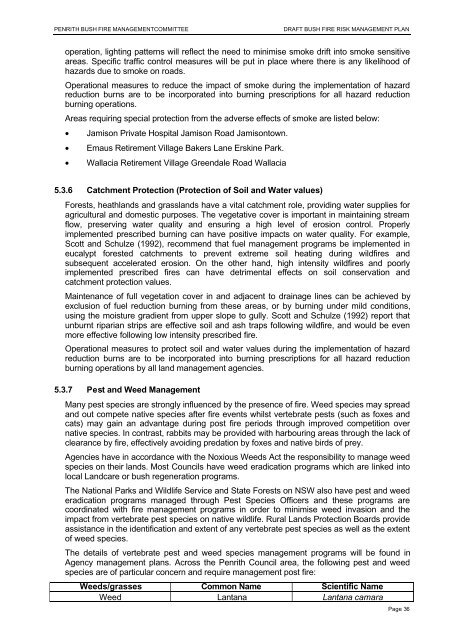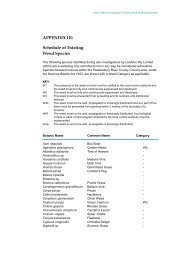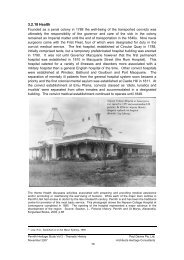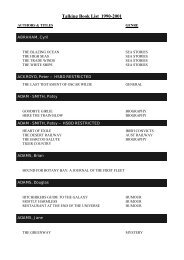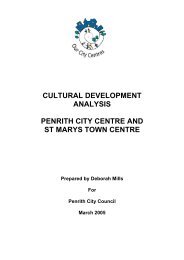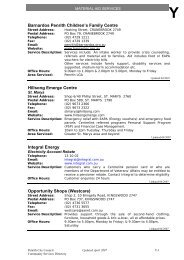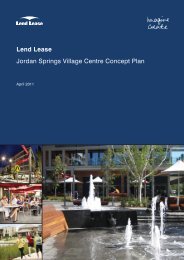Penrith Bush Fire Management Committee Bush Fire Risk ...
Penrith Bush Fire Management Committee Bush Fire Risk ...
Penrith Bush Fire Management Committee Bush Fire Risk ...
Create successful ePaper yourself
Turn your PDF publications into a flip-book with our unique Google optimized e-Paper software.
PENRITH BUSH FIRE MANAGEMENTCOMMITTEE DRAFT BUSH FIRE RISK MANAGEMENT PLAN<br />
operation, lighting patterns will reflect the need to minimise smoke drift into smoke sensitive<br />
areas. Specific traffic control measures will be put in place where there is any likelihood of<br />
hazards due to smoke on roads.<br />
Operational measures to reduce the impact of smoke during the implementation of hazard<br />
reduction burns are to be incorporated into burning prescriptions for all hazard reduction<br />
burning operations.<br />
Areas requiring special protection from the adverse effects of smoke are listed below:<br />
• Jamison Private Hospital Jamison Road Jamisontown.<br />
• Emaus Retirement Village Bakers Lane Erskine Park.<br />
• Wallacia Retirement Village Greendale Road Wallacia<br />
5.3.6 Catchment Protection (Protection of Soil and Water values)<br />
Forests, heathlands and grasslands have a vital catchment role, providing water supplies for<br />
agricultural and domestic purposes. The vegetative cover is important in maintaining stream<br />
flow, preserving water quality and ensuring a high level of erosion control. Properly<br />
implemented prescribed burning can have positive impacts on water quality. For example,<br />
Scott and Schulze (1992), recommend that fuel management programs be implemented in<br />
eucalypt forested catchments to prevent extreme soil heating during wildfires and<br />
subsequent accelerated erosion. On the other hand, high intensity wildfires and poorly<br />
implemented prescribed fires can have detrimental effects on soil conservation and<br />
catchment protection values.<br />
Maintenance of full vegetation cover in and adjacent to drainage lines can be achieved by<br />
exclusion of fuel reduction burning from these areas, or by burning under mild conditions,<br />
using the moisture gradient from upper slope to gully. Scott and Schulze (1992) report that<br />
unburnt riparian strips are effective soil and ash traps following wildfire, and would be even<br />
more effective following low intensity prescribed fire.<br />
Operational measures to protect soil and water values during the implementation of hazard<br />
reduction burns are to be incorporated into burning prescriptions for all hazard reduction<br />
burning operations by all land management agencies.<br />
5.3.7 Pest and Weed <strong>Management</strong><br />
Many pest species are strongly influenced by the presence of fire. Weed species may spread<br />
and out compete native species after fire events whilst vertebrate pests (such as foxes and<br />
cats) may gain an advantage during post fire periods through improved competition over<br />
native species. In contrast, rabbits may be provided with harbouring areas through the lack of<br />
clearance by fire, effectively avoiding predation by foxes and native birds of prey.<br />
Agencies have in accordance with the Noxious Weeds Act the responsibility to manage weed<br />
species on their lands. Most Councils have weed eradication programs which are linked into<br />
local Landcare or bush regeneration programs.<br />
The National Parks and Wildlife Service and State Forests on NSW also have pest and weed<br />
eradication programs managed through Pest Species Officers and these programs are<br />
coordinated with fire management programs in order to minimise weed invasion and the<br />
impact from vertebrate pest species on native wildlife. Rural Lands Protection Boards provide<br />
assistance in the identification and extent of any vertebrate pest species as well as the extent<br />
of weed species.<br />
The details of vertebrate pest and weed species management programs will be found in<br />
Agency management plans. Across the <strong>Penrith</strong> Council area, the following pest and weed<br />
species are of particular concern and require management post fire:<br />
Weeds/grasses Common Name Scientific Name<br />
Weed Lantana Lantana camara<br />
Page 36


